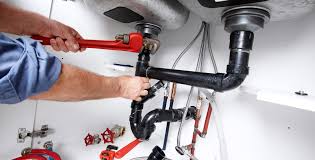A flooded basement can be a homeowner’s nightmare. Whether caused by a heavy rainstorm, a burst pipe, or a backed-up sewer line, water entering your basement not only threatens your property but can also lead to extensive damage if not addressed immediately. The longer the water sits, the higher the potential costs both in terms of repairs and health risks like mould growth and structural damage.

Mould Growth: Mold thrives in damp, dark environments. If the water is left to sit for more than 24 to 48 hours, you’re at serious risk of developing a mould infestation. Mould can cause health problems and increase restoration costs significantly.
Electrical Hazards: If floodwater reaches outlets, electrical panels, or wires, there’s a risk of electrocution or fire. Swift action is critical to ensure safety and avoid further damage.
Before doing anything, your safety is the top priority. Basement flooding can lead to hazardous conditions, including electrical risks, contaminated water, and unstable structures. Here’s what to do first:
Turn off the Electricity: If it’s safe to do so, turn off the power supply to your basement and home at the breaker box. Water and electricity don’t mix, and exposed wiring in flooded areas can be dangerous.
Avoid Contact with Contaminated Water: If the floodwater is from a sewage backup or stormwater, it’s likely contaminated with bacteria, chemicals, or other harmful substances. Avoid contact with the water until you have the proper protective gear (rubber boots, gloves, and face masks).
Evacuate if Necessary: If the flood is severe and water levels are rising quickly, evacuate your home and seek higher ground. Don’t risk your safety for personal belongings.
Use a Sump Pump: If you have a sump pump installed in your basement, this will be your first line of defence. Activate the pump to start removing the water. If your pump is overwhelmed, a backup or additional pump can help speed up the process.
Contact a Professional: For larger floods, or if you don’t have the necessary equipment, it’s best to call a flood restoration company immediately. Professionals have high-powered pumps and equipment that can remove water quickly, minimizing the amount of time your basement remains submerged.
While it may be tempting to wait for the water level to naturally recede, the longer the water stays in your basement, the more damage it will cause.
After the majority of the water has been removed, you’ll need to start the process of salvaging any belongings that might still be recoverable. While it’s tempting to save everything, keep in mind that some items may be beyond repair after being exposed to water.
Move Belongings to Dry Ground: Remove furniture, electronics, appliances, and personal items as soon as possible. The longer they stay in the flooded area, the higher the chance they’ll be damaged or contaminated.
Discard Saturated Materials: Certain materials, like carpet, insulation, and drywall, will soak up water quickly and can become breeding grounds for mould. It’s often best to dispose of these items to prevent further damage and health risks.
Once you’ve removed the water and salvaged what you can, the next step is to thoroughly dry out the basement to prevent mould growth and further deterioration.
Use a Dehumidifier: Dehumidifiers can help reduce the moisture levels in the air and absorb any lingering water in walls and floors. The more efficient your dehumidifier, the faster the drying process.
Check for Hidden Moisture: Use a moisture meter to identify areas that are still damp. This is especially important in areas like insulation, wood beams, and behind walls. If moisture is detected, it may require professional drying equipment to reach the hard-to-dry areas.
Basement floods can be overwhelming, but acting quickly can help minimize the damage and associated costs. By ensuring safety, removing water promptly, salvaging items, and drying the area, you can significantly reduce the impact of a basement flood. If the situation is severe or if you feel unsure, don’t hesitate to call in professionals to handle the restoration process. The faster you act, the better chance you have of preventing long-term damage, mould growth, and expensive repairs. At GTARestoration.ca, we specialize in basement flood restoration and can provide the fast, professional services you need to get your home back to normal.
Living in North York has its perks, from beautiful parks to vibrant communities. However, homeowners often face a common yet daunting issue: wet basements. A wet basement not only compromises the integrity of your home but can also lead to mold growth, structural damage, and decreased property value. This comprehensive guide explores basement waterproofing in North York, providing you with essential information on techniques, benefits, and solutions for effective wet basement repair.
Basement waterproofing is a crucial process designed to prevent water from entering your basement and causing damage. It involves various techniques and materials aimed at creating a barrier against water intrusion, ensuring your basement remains dry and usable. In North York, where seasonal rains can lead to increased groundwater levels, effective waterproofing is essential.
Emergency Flood and Water Damage MississaugaA wet basement creates an ideal environment for mold growth, which poses health risks to your family. Effective waterproofing solutions help maintain a dry environment, reducing the likelihood of mold.
Homes with dry, usable basements are more attractive to potential buyers. By implementing foundation waterproofing, you not only protect your investment but also increase your home’s market value.
Moisture in your basement can lead to poor air quality throughout your home. By waterproofing your basement, you enhance the overall air quality and comfort of your living spaces.
– Sump Pumps: Installing a sump pump is an effective solution for managing excess water in your basement. The pump collects water and directs it away from your foundation, reducing the risk of flooding.
Foundation waterproofing is critical for protecting the structural integrity of your home. This method involves applying a waterproof barrier to the exterior of your foundation walls to prevent water intrusion.
– Waterproof Membrane: A waterproof membrane is a crucial component of foundation waterproofing. It is typically made of rubber or plastic and is applied to the exterior foundation walls to prevent water penetration.
RCC waterproofing (Reinforced Cement Concrete) is a popular technique used for preventing water ingress in basements. This method involves mixing waterproofing additives into the concrete mix, enhancing its resistance to water.
– Benefits of RCC Waterproofing: This method offers durability, long-lasting protection, and minimal maintenance. It’s particularly effective in areas prone to heavy rainfall, making it ideal for North York.
Using a waterproof membrane for foundation is one of the most effective strategies for basement waterproofing. This membrane acts as a barrier, preventing water from coming into contact with the foundation.
– Types of Waterproof Membranes: Various types of membranes are available, including liquid membranes, sheet membranes, and spray-on membranes. Every type provides distinct advantages, making it crucial to select the option that aligns best with your specific requirements.
Before any work begins, a thorough inspection of your basement is essential. A professional will assess the extent of the moisture problem, identify potential sources of water intrusion, and recommend appropriate solutions. This step is crucial for effective wet basement repair.
Based on the assessment, you’ll need to choose the most effective waterproofing solutions for your situation. This may involve a combination of interior and exterior methods, depending on the severity of the water intrusion.
Once you’ve chosen your solutions, the implementation process begins. For exterior waterproofing, this may involve excavation, applying a waterproof membrane, and installing drainage systems. For interior waterproofing, this could include sealing walls and installing sump pumps.
After the waterproofing measures are in place, it’s essential to test their effectiveness. Monitor your basement during heavy rainfall to ensure that the solutions are working as intended.
Basement waterproofing in North York is a critical investment for homeowners facing wet basement issues. By understanding the causes and implementing effective solutions such as interior basement waterproofing, foundation waterproofing, and RCC waterproofing, you can protect your home from water damage and mold growth.
For expert assistance and high-quality solutions tailored to your needs, contact GTA Restoration. Our team is here to help you with all your basement waterproofing needs, ensuring your North York home remains safe and dry.






0 Comments
We welcome relevant and respectful comments. Spam comments will not be approved.